‘Health and safety gone mad’; that well-worn phrase that's nearly as high up on the Daily Mail’s list of go-to headlines as ‘x gives you cancer’. People love to point to supposed incidents of over the top safety regulations as evidence of a growing nanny state culture in Britain.
In reality, these stories that make the headlines tend to be exaggerated at best and are just plain made-up at worst.

Even these guys have to wear hard-hats sometimes
Whilst some might seem quite funny, it is a serious issue that has badly damaged the reputation of Health and Safety as a concept. People believe these myths to be fact and then begin to view Health and Safety as over the top. This leads to people ignoring health and safety regulations on the whole, which results in an increase in serious injuries and deaths that could have otherwise been prevented.
As such the HSE is committed to disproving these wild claims in order to maintain the necessary regard for Health and Safety overall. Each month they choose a different myth and set out to prove that it has no actual basis in fact.
In that vein, we thought we'd come up with 5 of our favourites that the HSE has managed to disprove.
Need to learn or brush up on your Health and Safety regulations? Our Health and Safety courses are accredited by IOSH, the world's biggest health and safety membership organisation.
Andy Trainer
9 Nov 2012
Risk Assessments are required for businesses as under UK law, but small and medium businesses often struggle to assign responsibility for the task or are unaware of what a risk assessment actually involves!
We launched our Risk& Assessment course (the only one in the UK accredited by IOSH!) to plug the knowledge gap but we've decided to go one step further by producing a Risk Assessment template.
You can download the template as a Word doc or PDF, and then edit it with your company information. We will run through each item on the document in this post but we do highly recommend training to make sure that you are completing and documenting your risk assessments to meet Government specification.
For a more comprehensive Health & Safety training, we also run a 4-day IOSH Managing Safely course. This workshop also covers risk assessment in more detail and will teach you how to manage health and safety in the workplace in a way that meets UK Health and Safety Regulations.
Risk Assessment Template
First, download the risk assessment template:
Risk Assessment Template.doc Risk Assessment Template.PDF
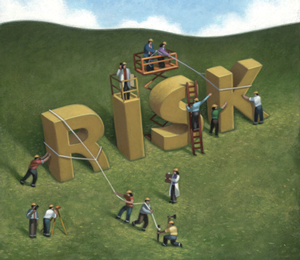
Obviously, you're going to want your own branding and your own introduction, so the first thing we recommend doing is changing the header to your business name and removing all the text above the table.
This would be an ideal place to write down your expectations of employees so that everyone is clear.
Andy Trainer
3 Aug 2012
We are pleased to announce the addition of Risk Assessment Training to our Health & Safety training options. It's our second IOSH accredited course, joining our highly popular IOSH Managing Safely training course.
The Institution of Occupational Safety and Health (IOSH) is the only Chartered body for health and safety professionals in the world, and currently, we are the only organisation to offer an IOSH accredited Risk Assessment course!
At the end of our 1-day IOSH Introduction to Risk Assessment training course, you will be able to carry out effective, comprehensive risk assessments that meet industry standards. You will also take a short practical test at the end of the day resulting in an IOSH Risk Assessment certificate.
IOSH Risk Assessment Course Dates
The first available dates for our brand new Risk Assessment course are:
- 3rd October 2012
- 10th December 2012
If those dates aren't suitable for you then it is also possible to arrange a private session either at your premises or at our training centre in Brighton. Please call us on 01273 622272 for a tailored quote.
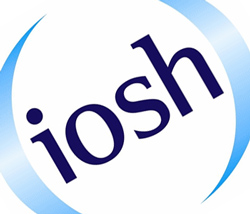
Andy Trainer
23 Jul 2012
Almost every person responsible for Health and Safety in the workplace has, at some point, had to consider how important the need for PAT testing is. Many people claim it’s a legal requirement – but is that a fact or a myth?
As we know that Health and Safety is so important to employers – yet surrounded by so much confusion - we offer a 4-day comprehensive Health and Safety course which is accredited by IOSH (the Institution of Occupational Safety and Health). Of course, protecting your employees from harm is your number one priority – but there are lots of other benefits of Health and Safety training as well.

Here are words from our trainer, Andrea, on the subject of PAT testing - and other Health and Safety myths.
Andy Trainer
21 May 2012
Meeting government requirements for Health and Safety, of course, has the ultimate goal of protecting your employees from harm. You would not want a workplace accident on your conscience, or to feel responsible for long-term effects from work on someone’s health.
Further to this, having staff trained in IOSH Managing Safely means reduced insurance premiums, enhanced local reputation, increased productivity, reduced absence, and protects you against legal costs – or even imprisonment!
Within the company, the role of managing health and safety usually falls to a manager or supervisor. It is vital that they undertake training in Health and Safety law and practices in order to fulfil this role and protect the rest of the staff.
Here's some more on those ways that following Health and Safety practices can benefit your business:

1. Reduced Insurance Premiums
Proving that you have managers who are trained in Health and Safety issues will reduce your insurance premiums because, of course, it means you are less likely to make a claim. Not only that, but the actions taken to prevent injury or illness will mean those premiums stay low because no claims are made.
Andy Trainer
2 May 2012
Health and Safety Training is vitally important for businesses to ensure they operate in a safe environment. Our IOSH Training course is accredited by the Institution of Occupational Safety and Health and is designed to minimise risk at work to avoid some of the problems in the following guest post.
How to Prevent Workplace Injury
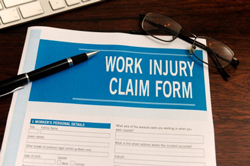 Some of us work in professions that come with the risk of serious bodily danger. Construction workers, deep-sea welders, and tandem skydiving instructors, for example, may risk their lives each day simply by showing up for work. Even those that operate a vehicle (for shipping, transport, or other reasons) may be prone to automobile accidents. But the majority of people work at jobs that are eminently safer, whether in offices or the service industry, and don’t face these same hazards. As a result, they might not be prepared for the possible dangers lurking in their otherwise safe work environment. So if you have an occupation that you think could not possibly bring you harm, you might want to think again. In order to prevent workplace injury, you first need to recognize that it could happen to you.
Some of us work in professions that come with the risk of serious bodily danger. Construction workers, deep-sea welders, and tandem skydiving instructors, for example, may risk their lives each day simply by showing up for work. Even those that operate a vehicle (for shipping, transport, or other reasons) may be prone to automobile accidents. But the majority of people work at jobs that are eminently safer, whether in offices or the service industry, and don’t face these same hazards. As a result, they might not be prepared for the possible dangers lurking in their otherwise safe work environment. So if you have an occupation that you think could not possibly bring you harm, you might want to think again. In order to prevent workplace injury, you first need to recognize that it could happen to you.
Be Aware of Dangers
Of course, it helps to be aware of your surroundings and see the potential threat lurking in items as seemingly innocuous as, say, a keyboard, a clean floor, or a box of paper. These three items, in fact, represent the major causes of injury in an office environment. “A keyboard?” you may be asking yourself, “How can a keyboard be harmful?”
Evan Fischer
10 Nov 2011
How to Comply with UK Health and Safety Legislation
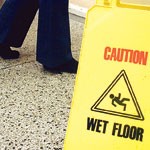
Regardless of complying with Health and Safety laws, providing Health and Safety Training for your staff is something that all businesses should seriously consider.
Sending staff on accredited Health and Safety courses provide a wide range of benefits including reductions in insurance costs, increased productivity and profitability and an enhanced reputation for your organisation.
In addition - all businesses should take some simple steps to ensure you are compliant with HSE (health and safety executive) regulations.
To be fully compliant in terms of training - we'd recommend sending managers on an accredited course - the IOSH Managing Safely Course is available with us.
However here are our 10 Health and Safety tips to ensure that your organisation is compliant in the eyes of the HSE
Top 10 Health & Safety Tips
How to Comply with HSE Health and Safety Regulations
- Conduct a Risk Assessment for your workplace and document it - you need to think about what could cause harm, and what precautions you will take to prevent it.
- Any business with employees (so everyone except one-man-bands!) needs to take out Employers Liability Compulsory Insurance - you should display a copy of the certificate somewhere in your office.
- Write down how Health and Safety is managed in your business in the form of a Health and Safety Policy (this is compulsory if you employ more than 5 people)
- You need to have a person or people available in your organisation to provide Health and Safety advice to employees so that they can meet their responsibilities. This could be someone within your business who has received training, or an external consultant.
- You should frequently consult employees on health and safety to ensure that they understand any responsibilities that they have and are happy with the measures you have in place.
- Provide Health and Safety training for employees so that they are aware of the hazards and risks in the workplace and are equipped to manage them. The IOSH Managing Safely training course is a useful programme for all line managers to attend as it leads to a recognised health and safety qualification.
- Provide basic health, safety and welfare needs for all employees. This includes access to toilets, washing facilities and drinking water. These facilities must be suitable for any employees with disabilities.
- Provide Health and Safety Law information for employees to reference. This should take the form of a poster or leaflet displayed publicly in your workplace.
- By law, there are some work related accidents and diseases that you must report if they occur. More details on these can be found on the HSE website
- All businesses that deal with hazardous substances (e.g. explosives, asbestos etc...) or operate in an inherently hazardous industry (like construction) must register with the HSE
Hopefully your business already does all of the above.
If not, and you need some Health and Safety training or advice - please feel free to call us on 01273 622272 or e-mail info@siliconbeachtraining.co.uk
Andy Trainer
15 Jun 2011
In a new development in Apple's ongoing attempts to trademark borderline-generic terms - including "App Store" - the company has today threatened legal action against some medical suppliers including St John Ambulance and Medisave over a range of "Eye Pad" dressings - pending the success of a new trademark application.
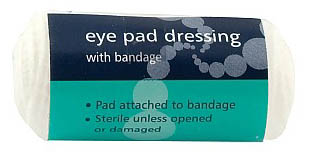
Only recently, Microsoft criticised Apple's attempts to trademark "App Store"; and recruited a professor of linguistics to support their claim that the term is generic and can be applied to any store that sells apps, in the same way, that "grocery store" can be used to describe any grocer.
However - if successful - this new move by Apple is set to establish a new legal precedent as it attempts to lay claim to the pronunciation of the name of its iconic tablet as well as just the word "iPad".
Dontcha Coppius, a spokesman for the Cupertino tech-giant, said in a statement this morning:
"These firms might not be spelling the name of their products in the same way, but consumers won't necessarily realise that if they hear the words spoken out loud. When someone says "hey, I just got two Eye Pads without even having to queue", that has the potential to devalue our brand. We're therefore looking to trademark the sound of the word "iPad" in order to protect that."
Silicon Beach Training spoke to corporate law specialist Khan Believu-Bortit about Apple's chances of success:

"I'm surprised at Apple's audacity in attempting to trademark the sound of a word, but if you look at the list of trademarks they already hold I wouldn't underestimate their chances. They have already got a trademark on Bonjour, for instance, and although this refers specifically to their networking technology, I know some of my French colleagues now greet each other very cautiously for fear of legal action."
Whilst commentators watch with interest as legal teams deliberate over Apple's latest claim, other retailers are apparently already taking action to protect themselves should the legislation pass.
Cadburys are reported to be hastily re-branding a range of hot-chocolate drinks whilst marketing teams at UK Supermarket giant Tesco have also been preparing new signage advertising "Green Tree-Based Fruit" for fear of censure over the term "Apple".
Silicon Beach Training offer a range of courses including Illustrator Training, Photoshop Training and InDesign Training. We also run other useful business courses including Leadership Training, Management Training, PRINCE2® Training
Aaron Charlie
16 Jun 2020